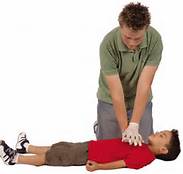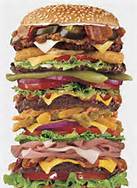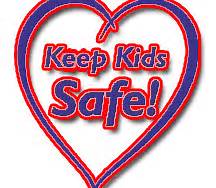Author:
|
Back to Blog
7 Common Myths about CPR – Debunked2/1/2015  For centuries, sudden death from cardiac arrest was virtually inevitable. In 1960, CPR was developed to revive unresponsive victims of sudden cardiac arrest. The American Heart Association now trains more than 12 million people in CPR annually, yet only around 92% of out-of-hospital cardiac arrest victims survive. In order to increase cardiac arrest victim survival rates and educate the public about the importance of emergency medical care, it’s critical to separate CPR facts from myths. Here are some of the most common myths about CPR and First Aid certification, debunked. 1. You can get sued if you perform bystander CPR If you provide emergency medical assistance with First Aid, CPR, or an AED, Good Samaritan laws will protect you, as long as you act reasonably and prudently. In cases where the rescuer was negligent, reckless, or abandoned the victim after providing initial care, courts have ruled that the Good Samaritan law did not apply, however. 2. You can kill someone if you perform CPR incorrectly CPR will only help a victim of cardiac arrest, whether or not it’s not performed perfectly. It’s better to perform CPR imperfectly than not at all. 3. You can get a First Aid and CPR Certification online While it’s true that you can complete modules of First Aid and CPR certification courses online, you must complete an in-person skills session in order to receive a certification. Students are unable to experience the delivery of physical skills from a computer, so eLearning is only effective when it’s combined with in-person skills training. There are many CPR training courses that supposedly provide an “instant” online CPR certification, but none of these certifications would meet the requirements of an employer. 4. If you are alone with a victim and haven’t been trained in CPR, you shouldn’t attempt to perform CPR The American Heart Association recommends that untrained bystanders perform compression-only CPR to “buy time” until emergency medical personnel arrive. When you call 911, the dispatcher will give you instructions over the phone on how to do chest compressions. 5. CPR classes are long and boring If you take the time to choose an experienced instructor who teaches engaging classes, First Aid and CPR certification courses can actually be quite enjoyable. American Heart CPR courses only last a few hours, so time will pass quickly if you choose the right instructor. 6. You can contract HIV/AIDS from performing CPR Many people are reluctant to perform conventional CPR with mouth-to-mouth resuscitation because they are scared that they will contract HIV/AIDS, but the risk of this happening is minimal. HIV/AIDS can only be spread through direct contact with blood, semen, or vaginal fluid. If you’re still worried about it, you can always carry a special barrier device around with you in case you ever have to perform CPR. You can also perform compression-only CPR instead. 7. CPR always works Movies and TV would have you believe that CPR works every time, but the actual success rate for CPR is somewhere between 5 and 10% for adults, depending on how soon it is performed after the victim’s collapse. Nevertheless, learning to perform CPR is critical because it can double or triple a victim’s chance for survival. So give us a call to get your class on the books (503) 538-2610 or www.cprnorthwest.com
0 Comments
Read More
Back to Blog
Help Prevent Clogged Arteries1/14/2015 It is well understood that clogged arteries (artery plaque) can increase one’s chances of having a stroke or heart attack. Understanding the causes of artery plaque and what you can do to prevent this devastating condition, puts you in the driver’s seat to leading a healthy, long life.
Arteries are the blood vessels that carry oxygen rich blood to all necessary organs of your body. With clear smooth walls these arteries allow the blood to flow effortlessly. When a build up of plaque grows on the walls of the arties, the blood flow can become narrow and in some very dangerous situations, prevent the flow of blood altogether. What causes this build up is what is being carried in the blood. It is typically abnormally high contents of fats, cholesterol, calcium. There are suitable dietary changes one can make to lessen the high content of these dangerous substances in your blood. According to the American Academy of Family Physicians there are several ways to improve your lipid levels. Eat at least five to seven servings of vegetables and fruits daily. Eat soy products and legumes daily. Use oils that contain monounsaturated fatty acids and n-3 fatty acids (such as canola and olive oil). Eat monounsaturated-rich nuts in moderation. Eat garlic regularly (if acceptable). Increase intake of soluble fiber. Decrease intake of saturated fat, polyunsaturated fat and transfatty acids; in particular, follow these guidelines: Decrease consumption of butter and margarine. Decrease consumption of fatty meats. Decrease consumption of dairy products made from 2% or whole milk. Patients can reduce their intake of harmful fats by nearly 50 percent simply by cutting out butter and margarine, fatty meats and dairy products made from 2 percent or whole milk. http://www.aafp.org/afp/980315ap/masley.html There are CPR classes being conducted all over the country to empower people to help those who have suffer a serious heart attack. These folks are learning what to do after this devastating emergency happens, make it your job to prevent it! If your doctor has warned that you are at risk for developing cardiovascular disease, work with her or him to create these healthy dietary changes and also develop an exercise program to help reduce your chances of ever having a heart attack or stroke. Call us for more infromation 503-538-2610
Back to Blog
Poor Choices12/28/2014 Do your poor choices in the past disqualify you from making good choices in the future?…Does what you did yesterday define who are today or who you will be tomorrow? Sergio Leyva, an inmate in the LA county jail, learned he could redeem himself though something as simple as CPR.
Back in August of this year, one of his correctional officers collapsed while suffering from a heart attack. Sergio and several other inmates rushed to help their fallen jailer. “No breathing. No heartbeat,” Sergio said. “I did CPR on him. And, basically brought him back to life.” “I didn’t see him as an officer. He’s a person. I was going to help that person, regardless of the uniform or no uniform,” he explained. “That man is someone’s father and I have a father. I would like someone to be able to help my father if that happened to him.” “I’m really not a bad person.” he continued. “I’m actually a good person, I just made bad choices. That’s all. I know that if it were me laying on the ground, dying, that man would have helped me.” And thanks to Sergio, his correctional officer is alive today because of his quick thinking and determination to show compassion in the most unlikely setting.
Back to Blog
CPR Northwest back from Holidays12/28/2014  It’s great to be back from the Holidays and resuming CPR Northwest The relaxation, turkey, and other delicious foods were a treat, but it’s time to get back to saving lives. Hopefully everyone kept the calorie count below four thousand. It’s been well documented that heart disease is a top killer in America, and for that matter throughout the world. Her at CPR Northwest which is an immediate treatment for cardiac arrest, but we should also always be cognisant of prevention, and what led to that cardiac arrest. It’s always helpful to read the label at the back of the packaging at the supermarket, even when the product claims to be healthy. The difference between something even as simple as 94 and 96 lean beef is amazing. 96 lean beef has about half the fat as 94. If you intend to consume more than 4 ounces, then it’s absolutely essential you go with the first option for heart health. CPR Northwesthas some exciting classes coming up this month including , adding a regular bloodborne pathogens class, and will soon be hosting classes regularly in Tigard Oregon as well.
Back to Blog
Like us on facebook to win12/28/2014 Like us on facebook by December 31 to be in the drawing for a $50.00 Macy's gift card.
Back to Blog
Who doesn't like Chocolate12/10/2014 Chocolate may be good for the heart but cardiologists are not giving you a license to indulge.
New research presented at Europe’s biggest medical meeting Monday suggested chocolate consumption might be associated with a one third reduction in the risk of developing heart disease. Just why there should be such a link was unclear, the European Society of Cardiology congress was told. There has been a string of scientific studies in recent years showing a potential health benefit from eating chocolate. Dark chocolate, in particular, contains compounds called flavanols thought to be good for the blood system. In an attempt to paint a clearer picture, Oscar Franco and colleagues from the University of Cambridge pooled results from seven studies involving 100,000 people. Five of the studies showed a beneficial link between eating chocolate and cardiovascular health, while two did not. Overall, the findings showed the highest levels of chocolate consumption were associated with a 37 percent reduction in cardiovascular disease and a 29 percent reduction in stroke compared with the lowest levels. Franco said there were limitations with the pooled analysis, which did not differentiate between dark and milk chocolate, and more research was needed to test whether chocolate actually caused better health outcomes or if it was due to some other confounding factor. “Evidence does suggest chocolate might have some heart health benefits but we need to find out why that might be,” said Victoria Taylor, of the British Heart Foundation, who was not involved in the research. “If you want to reduce your heart disease risk, there are much better places to start than at the bottom of a box of chocolates.” Franco, whose findings were also published online in the British Medical Journal, said while it seemed chocolate had heart benefits, these could easily be outweighed by the unhealthy nature of much confectionery. “The high sugar and fat content of commercially available chocolate should be considered, and initiatives to reduce it might permit an improved exposure to the beneficial effect of chocolate,” the research team wrote. To take a class in CPR or First aid give us a call 503-538-2610 or www
Back to Blog
 taught a class recently for a student who was going to nursing school. she was explaining to me how she was a lifeguard growing up, and she frequently was required to give CPR to drowning victims. She then went on to explain to me that "back in the day" they didn't use PPE, and instead just did mouth to mouth on her victims. To get just a tad more graphic, she explained to me that she knew that her breaths to compressions transition speed was very slow, because she was the only one that ever got vomit in her mouth from her patients. GREAT REASON to invest $6.50 in a mask I think!
If you would like to take a class and maybe here some this for your self give us a call and we can set up a class for you. 503-538-21610 or www.cprnorthwest.com
Back to Blog
Take Control of Portion Sizes11/14/2014  With holidays just in a couple of weeks seem
To take a CPR or first aid class give us a call at 503-538-2610 or visit out webpage at www.cprnorthwest.com
Back to Blog
Keep our Kids safe10/19/2014  Most people know to guard electrical outlets and lock up cabinets with chemicals inside, but there might be some extra steps you’ve overlooked. Here are a few common hazards for children found in most homes.
Back to Blog
 . Here’s why. Factors like high blood pressure can stretch out the arteries and cause scarring. Bad cholesterol, called LDL, often gets lodged in the scar tissue and combines with white blood cells to form clots. The good cholesterol, called HDL, helps keep the LDL from sticking and building up. Here are some other problems smoking causes
Atherosclerosis is the buildup of fatty substances in the arteries, and is a chief contributor to heart disease – the No. 1 killer in America. Stroke risks are higher, too. Because smoking temporarily increases blood pressure, and also increases cholesterol build-ups and the tendency for blood to clot, both types of strokes are more likely for a person who smokes. There are strokes caused from bleeding because of a weakened blood vessel and strokes caused by blockages and clots that form in a vessel and cut off blood flow to the brain. Stroke is one of the leading causes of death and adult disability in America. Smoking also contributes to peripheral artery disease. Again, because of the added strain smoking places on the arteries and veins, peripheral artery disease is much more like among smokers, and the habit also further increases the risk for aortic aneurism. There is hope and help Despite all these scary facts, there is hope if you’re a smoker. Did you know that almost immediately after you quit smoking, your lungs and other smoke-damaged organs start to repair themselves? You can start getting better the day you put down the cigarettes. See how this process happens in the Smoke-Free Living– Benefits & Milestones. Lung and breathing problems Your lungs are “air-exchange organs.” They’re made up of tubes that branch out into small sacs called bronchioles and alveoli where oxygen exchange takes place. Your body takes in the oxygen you breathe and uses it as fuel. When you breathe in, the sacs inflate. When you breathe out, the sacs deflate. In a healthy person, these tubes and sacs are very elastic and spongy. In a person with a chronic lung disease, these sacs lose their elasticity and oxygen exchange is greatly impaired. When that happens, your body is in grave danger because we can’t live without oxygen! The lungs protect themselves with a thin layer of protective mucus and by moving toxic particles out with small hairs. In a smoker’s lungs, the small hairs, called cilia, move slower and struggle to remove harmful particles. You can’t cough, sneeze or swallow effectively to clear these toxins. They become trapped in your lungs, leading to higher risk for numerous dangerous health problems, including heart disease, stroke and cancer. Chronic obstructive pulmonary disease is usually made up of two conditions that make breathing difficult: emphysema and chronic bronchitis. When you have emphysema, the air sacs in your lungs start to deteriorate and lose their elasticity. Chronic bronchitis occurs when the lining in the tubes in your lungs swell and restrict your breathing. These conditions are directly related to smoking. Rick Schmitt CPR Northwest 503-538-2610 |

 RSS Feed
RSS Feed